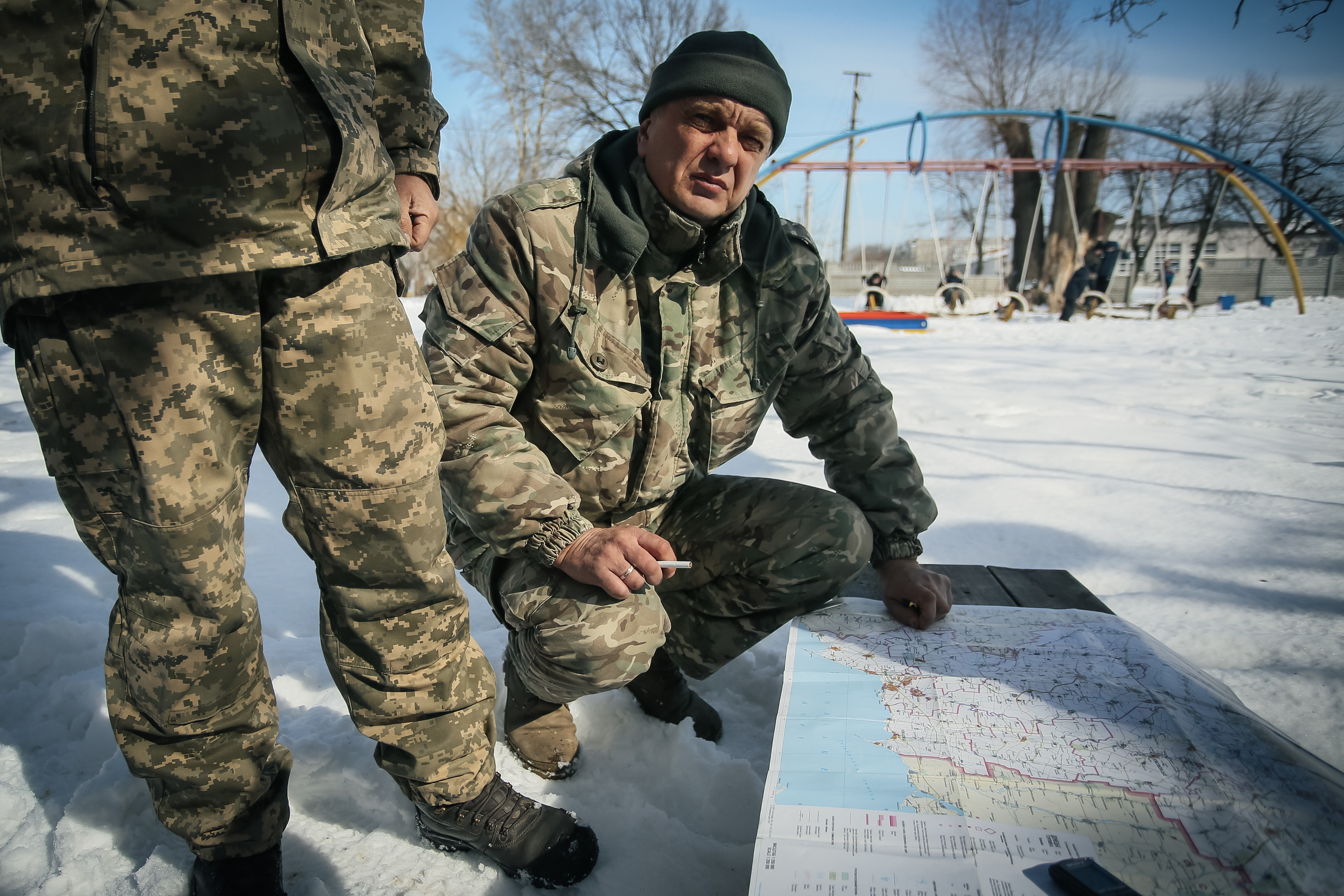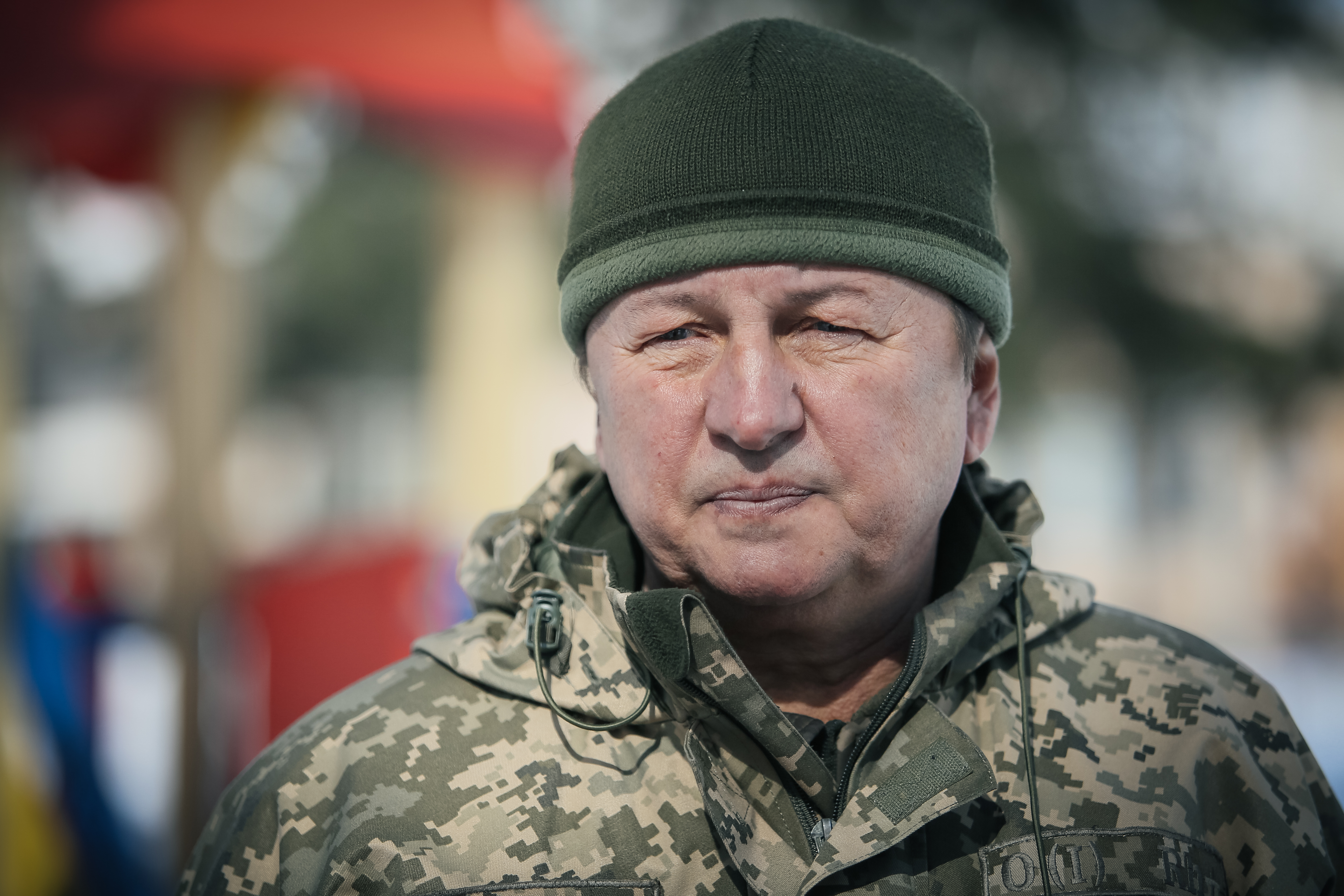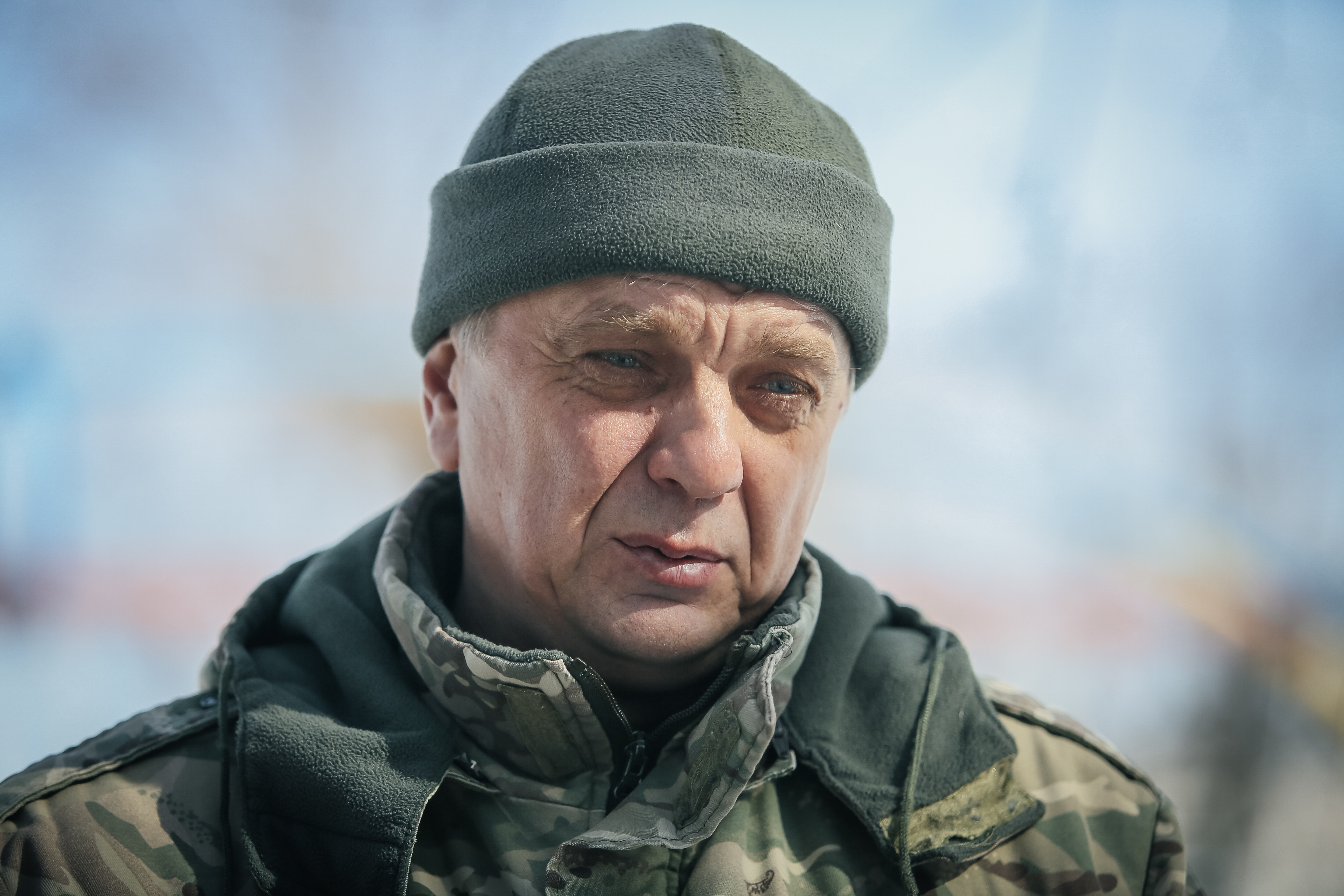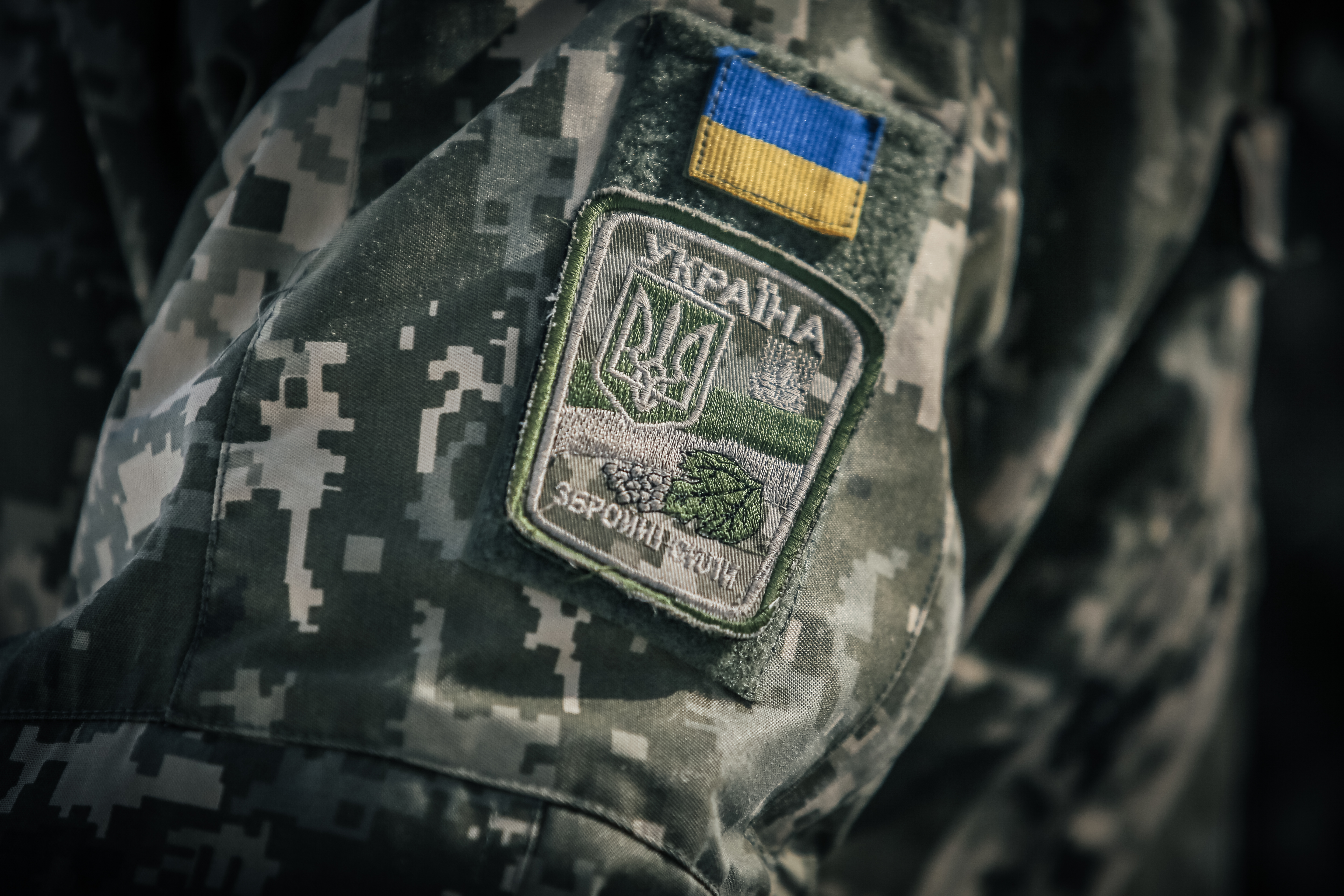Aug. 23, morning. Checkpoint at a crossroads in the town of Mnohopilliya
Serhiy Naselevets, the deputy company commander of the 39th Territorial Defense Battalion of volunteer fighters, received a warning by phone from Dmytro Zavadsky, the company commander of the 28th Brigade.
Zavadsky said that some 100 Russian armored vehicles had entered Ukrainian territory and attacked his unit near Amvrosiivka, town in just 20 kilometers from Mnohopilliya.
“He said: We have been routed. You guys should do something urgently, as you’re going to be encircled,” Naselevets remembers Zavadsky telling him.
Located on a hill, the soldiers in Mnohopilliya saw smoke and fire from the explosions coming from the site of the battle in Amvrosiivka.
Naselevets reported the news to his commander Yuriy Lysenko and then to General Ruslan Khomchak, the commander of the Ilovaisk operation, whose headquarters were in Mnohopilliya.
Khomchak answered that he “had taken a note,” but did nothing.
Later that day and over the next few days Naselevets heard Khomchak yelling into the phone to his top commanders in Kyiv about a catastrophic situation they were in. But the commanders were too busy preparing for the big military parade in the capital on Aug. 24, Ukraine’s Independence Day, Naselevets believes.
The soldiers of 39th battalion, also known as Dnipro 2, who were defending Khomchak’s headquarters, established a defensive perimeter around Mnohopilliya and were waiting for further commands. After that, the checkpoint was heavily shelled every day.
Leaving encirclement
In just three days, on Aug. 26, the soldiers in Mnohopilliya heard there were plans to set up a “green corridor” – a safe way out that the Russians would grant the surrounded Ukrainian troops.
On Aug. 27 and 28, Naselevets saw Russian officers coming to the outskirts of Mnohopilliya for talks with a Ukrainian military intelligence officer who went by the nom-de-guerre “Director.”
Lysenko remembers that his unit received an order to be prepared to leave Mnohopilliya at 5 a.m. on Aug. 29, but that their leaving time was postponed every hour.
They received Khomchak’s order to move, in full combat formation, only at 8:30 a.m., and then the Russians started shelling the Ukrainian column with mortars.
Lysenko and Naselevets were traveling in the middle of the column in UAZ off-road vehicles, a present from volunteers who were helping the Ukrainian army.
“It was a total mess. The Russians shelled us from tanks and with mortars,” Lysenko said.
At 9 a.m. dozens of Ukrainian soldiers from the 39th battalion, the Donbas battalion and some other volunteer fighters reached the village of Chervonosilske and dug in. They then started to return fire at the Russian positions.
Russian prisoners
At about 10 a.m. Naselevets jumped into an abandoned house to reload his Kalashnikov assault rifle. He sat on a bed and saw someone’s military boot sticking out from under the bed.
“I thought it was one of our guys, who had got scared and was hiding. I yelled at him: ‘Get out and fight,’” Naselevets remembers.
But when the guy got out from under the bed, Naselevets saw it was a Russian soldier, young and scared. Under other beds, Naselevets found two other Russians. And in the wardrobe in the entrance way of the house, the Ukrainian soldiers also found a severely wounded Russian officer.
They put the captives, three tankmen and one paratrooper, in the basement. Apparently, the Russians had hidden in the house after the Ukrainians had hit their tank and two combat vehicles with mortar fire.
Russian soldiers captured near Chervonosilske in Donetsk Oblast are interrogated on Aug. 29, 2014.
All that time the villagers were mostly hiding in their basements, although one brave man was out and kept on offering soldiers to drink some samohon, or Ukrainian moonshine. The soldiers refused.
In the afternoon, the soldiers saw a Ukrainian warplane, which flew over them and struck Russian positions in Kuteynikovo, but it didn’t return. Then at nearly 4 p.m. the soldiers realized they had no more ammunition, and so they decided to negotiate with the Russians.
Deal with Russians
Lysenko as the senior officer in the group went to the talks. When the Russians started shooting, he lifted his right hand to calm them. He was in a strong position, holding ashe was four captive Russians, including one who needed urgent medical attention.
The Russians asked if there were any volunteer fighters among Ukrainians in Chervonosilske, and Lysenko lied that all of his group belonged to Ukraine’s regular army. Russian propaganda portrayed the Ukrainian volunteer battalions as savage Nazis.
Lysenko gave the Russians the two options – the Ukrainian soldiers would surrender, with the Russians allowing them to collect their dead and wounded, and then release them in exchange for the Russian captives. Otherwise, the Ukrainians would attempt to break out of the village, killing their captives.
“I told them – we will go all, those who are still walking, and those who are on the ground too,” Lysenko said.
After thinking for 20 minutes, a Russian officer with first name Denis and the nom-de-guerre Lis agreed to the first option.
When returning to his soldiers, Lysenko urged the volunteer fighters to tear off their insignia and say they all belonged to 39th battalion. Some of the volunteer fighters refused to surrender and left Chervonosilske at night.
The 122 soldiers walked over to the Russians and spent the next two days in a field by the Russian positions, before being handed over to Ukrainian military medics in the village of Osykove. The Russians also gave them five trucks for the dead and wounded. They used several trucks for their own dead.

Serhiy Naselevets (L) and Yuriy Lysenko (R) talk to the Kyiv Post in Cherkasske military base (Oleg Petrasiuk).
Lysenko and Naselevets are still best friends, and both now serve in the army’s 55th Artillery Brigade.
“Ilovaisk was the hardest time. We were morally exhausted after all the secrecy and misunderstandings there,” Lysenko said.
The 39th Territorial Defense Battalion was formed in May 2014 from volunteers and also drafted soldiers in the village of Khashcheve in Dnipropetrovsk Oblast to defend the region from Russian regular and proxy forces. The battalion, which was called by its soldiers Dnipro-2, was subordinate to Ukraine’s army. In June, its soldiers were sent to the Donbas, and served mostly at the checkpoints near Mariupol. In July its soldiers were sent to the area of Ilovaisk. During the operation to liberate Ilovaisk, eight of the battalion’s soldiers were killed, according to Memory Book, a volunteer citizen project. In November 2014, the battalion was transformed into the 39th Motorized Infantry Battalion, part of the 55th Artillery Brigade.




